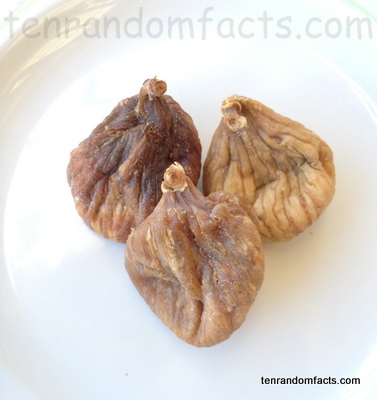Figs are old, but delicious fruit.
- Figs are fruit that grow on 7 to 10 metres (23 to 33 feet) high trees with the scientific name Ficus carica, and belong to the family Moraceae, the family of figs or mulberries.
- Ficus carica trees are native to Asia and the Middle East, and there are other fig species native to other parts of the world, although their fruit is not commonly consumed.
- Figs have a length of 3 to 5 centimetres (1.2 to 2 inches) and typically have a ripened skin colour of green, purple, black and brown.
- Unripened figs contain latex, which can cause irritation if the sap contacts the skin.
- Figs were one of the first cultivated fruit and were very popular among Ancient Romans, Greeks and Egyptians.
Dried Figs
- Figs are generally eaten raw or dried and are commonly used in baked goods or made into jam, and they can also be used to make an alcoholic beverage.
- In 2012, Turkey produced 274,500 tonnes (302,600 tons) of figs, which was a quarter of the total production in the world of approximately 1,031,000 tonnes (1,137,000 tons).
- There are in excess of 600 varieties of figs, and their flesh colour can be red, pink, yellow, orange and purple.
- Fresh figs are generally not available in countries where the fruit is not grown, as they are difficult to transport due to their thin skin that is easily damaged, and once picked they can only be kept at room temperature for a day or two.
- Figs are high in dietary fibre and contain significant quantities of vitamin K, magnesium, potassium and manganese.
Bibliography:
Common Fig, 2014, Wikipedia, http://en.wikipedia.org/wiki/Common_fig
Figs, 2014, The Fruit Pages, http://www.thefruitpages.com/figs.shtml
Figs, 2014, The World’s Healthiest Foods, http://www.whfoods.com/genpage.php?tname=foodspice&dbid=24
Fig, 2014, Purdue University: Center for New Crops & Plant Products, http://www.hort.purdue.edu/newcrop/morton/fig.html







